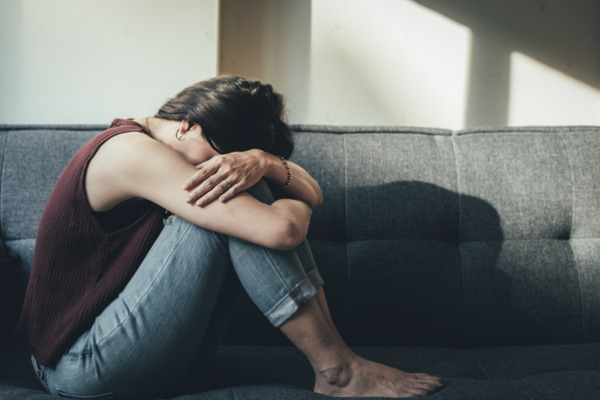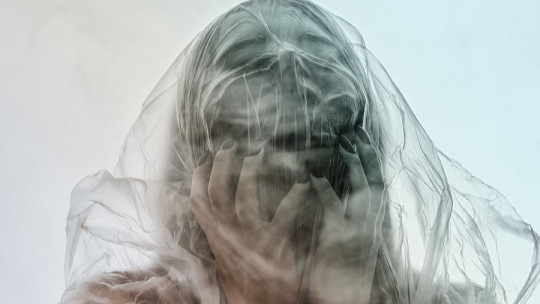In the complex fabric of human experience, phobias emerge as mysteries that significantly affect the daily lives of those who suffer from them. Phobias are defined as fears of specific situations and environments or specific objects, emitted irrationally and very difficult to overcome.. Being afraid of something is normal as an adaptive reaction to dangerous situations, but phobias are emitted in situations that, in principle, are not going to harm you.
Phobias can be divided into different categories depending on the nature of the feared object. Thus, we can differentiate impulsive phobias as an irrational fear of situations in which people who experience it feel that it will be practically impossible to flee or escape.
In this article, We are going to focus on defining impulsive phobias and understanding in more depth whether they can be dangerous in their magnitude.. We will thus unravel the complexities of its origin, the tangible impact on daily life and discuss some treatment and prevention strategies that shed light on the path to recovery and overcoming these paralyzing fears.
What are impulsive phobias?
Impulsive phobias, also known as escape phobias, are anxiety disorders characterized by an intense, irrational fear of situations in which the person feels that escape could be difficult or embarrassing.. A common example is agoraphobia, where people fear being in public places or situations where they might have difficulty escaping or receiving help in the event of a crisis.
Flight phobia is another prominent example, where the simple act of getting on a plane triggers extreme anxiety. Additionally, situations such as using elevators, being stuck in a traffic jam, or even being in a crowd can trigger panic responses in those who suffer from impulse phobias.
The prevalence of these phobias is more common than you might think. According to recent studies, It is estimated that they affect around 10% of the population at some point in their lives.. These disorders can manifest gradually or arise suddenly, significantly impacting the quality of life of those who experience them. The diversity of situations that can trigger these phobias underscores the complexity of the spectrum of anxiety disorders and the importance of understanding them thoroughly.
As we explore impulsive phobias, it is crucial to highlight that, although symptoms can vary in intensity, the overwhelming emotional response experienced by those who suffer from these phobias is very real. This knowledge is essential to foster empathy and understanding in society at large.

Causes and development factors
Impulsive phobias, like many anxiety disorders, have a multifactorial basis in their development. Various genetic, environmental and psychological elements can converge to trigger these extreme responses to specific situations.
1. Genetics
First of all, genetic predisposition plays a crucial role. Studies have suggested that people with a family history of anxiety disorders are more likely to develop impulsive phobias.. Genetics can influence the way the brain processes and responds to fear, creating a susceptibility to extreme reactions to certain stimuli.
2. Environment
Environmental factors also play a significant role. Traumatic experiences or stressful events during childhood can contribute to the development of impulsive phobias. A traffic accident, an embarrassing situation in a public place, or even a turbulent flight experience can leave a lasting imprint on the subconscious, associating certain environments or situations with imminent danger.
3. Loss of control
From a psychological perspective, impulsive phobias are often related to the perception of loss of control. People who experience these phobias often fear that they will not be able to escape or receive help in specific situations.. This fear may be rooted in previous experiences or even develop as a result of negative and distorted thought patterns.
4. Factor interaction
It is crucial to understand that the interaction of these factors may be unique to each individual. Some people may develop impulsive phobias without a clear traumatic history, while others may experience a specific trigger.
Impact on daily life
Impulse phobias are not simply irrational worries; They have a profound impact on the daily lives of those who experience them. From avoiding certain places to limiting everyday activities, these phobias can significantly impact quality of life and ability to enjoy seemingly normal experiences.
1. Quality of life
People with impulsive phobias often face challenges participating in social, work, and recreational activities. Agoraphobia, for example, can lead to avoidance of public spaces, resulting in significant social isolation.. Flight phobias can limit travel opportunities and affect the work and personal lives of those who suffer from them.
2. Emotions
Furthermore, the emotional impact should not be underestimated. Situations that trigger impulsive phobias can cause extreme anxiety responses, including palpitations, sweating, and difficulty breathing. These symptoms can generate anticipated anxiety, leading to active avoidance of feared situations.
3. Work environment
In the workplace, impulsive phobias can affect productivity and the ability to fulfill work responsibilities. Decisions about choosing jobs or careers may be conditioned by these phobias, limiting opportunities for professional development..
4. Social relationships
The impact on interpersonal relationships is also significant. Impulse phobias can cause strains in friendships, family relationships, or even romances, as people look for ways to adapt to the limitations imposed by these phobias.

Treatments and strategies
Fortunately, there are several treatment options and effective strategies to address impulsive phobias and help people overcome the challenges they present in daily life. It is essential to note that each individual responds uniquely to treatments, and what works for one person may not be equally effective for another..
The key lies in seeking a comprehensive and personalized approach, working in collaboration with mental health professionals to find the most appropriate strategy. We are going to discuss some of the most popular techniques and treatments for impulsive phobias.
1. Cognitive-behavioral therapy
Cognitive behavioral therapy (CBT) stands out as one of the most effective approaches. This type of therapy focuses on identifying and changing negative thought patterns and behaviors associated with the phobia. Gradual exposure to feared situations, under the guidance of a therapist, allows the person to gradually develop the ability to face and overcome the fear.
2. Exposure therapy
Exposure therapy not only helps desensitize the person to feared situations, but also provides tools to manage the associated anxiety. Relaxation techniques, controlled breathing, and cognitive restructuring are key components of CBT for impulsive phobias.
3. Medications and psychotropic drugs
In addition to therapy, in some cases, medications may be helpful in controlling symptoms. Antidepressants and anti-anxiety medications may be prescribed by mental health professionals to reduce anxiety and improve coping skills..
4. Social support and deconstruction of stigmas
Education and social support also play a vital role in the recovery process. Understanding that they are not alone and that there are resources available can motivate people to seek help and move forward with treatment.
Mitigation and prevention
Mitigation and prevention of impulsive phobias involve adopting practical strategies to confront and reduce the intensity of irrational fears. Next, we are going to discuss some strategies for mitigation and prevention. Keep in mind that each person is different and requires a unique approach for their own case.. Do not hesitate to seek professional help if you do not feel that you will be able to carry out these types of techniques on your own.
Prevention involves identifying symptoms early and seeking professional help before phobias significantly affect daily life. Continuing education and public awareness also help create caring environments that facilitate prevention and treatment.
Conclusions
In conclusion, impulsive phobias have a substantial impact on daily life, affecting relationships, opportunities, and emotional well-being. However, with therapeutic approaches such as cognitive behavioral therapy and social support, recovery is possible. A deep understanding of the causes and the application of mitigation and prevention strategies are essential. Breaking the associated stigma, raising awareness, and promoting access to effective treatments are essential steps toward a fuller life free from the limitations of impulsive phobias..










